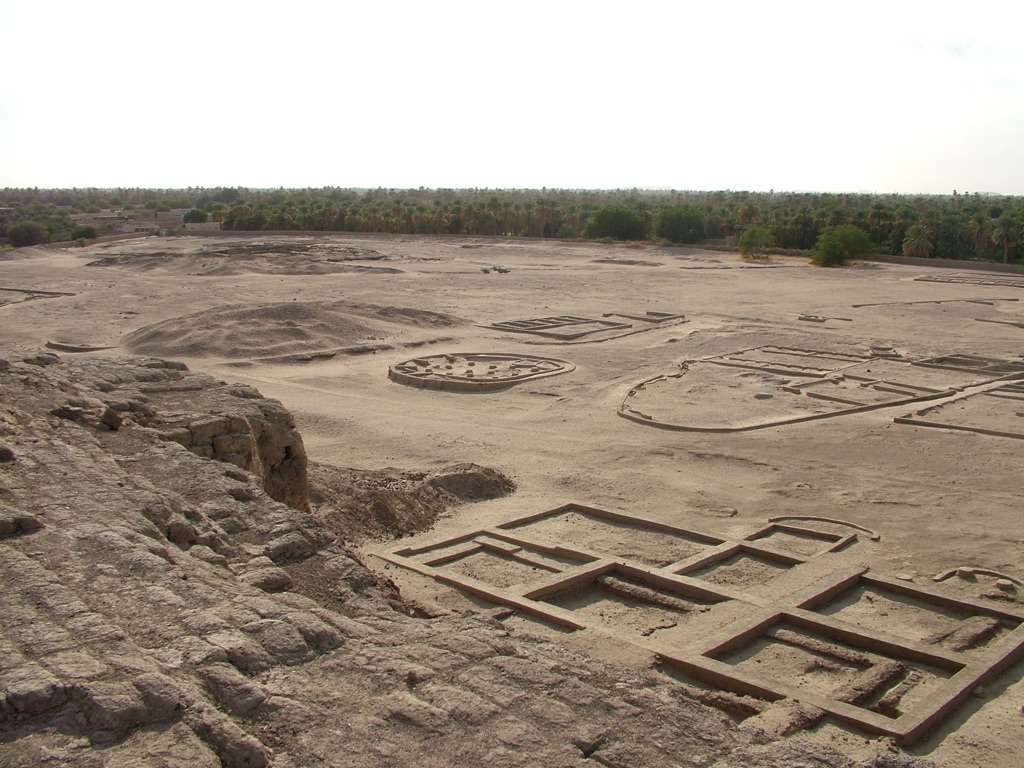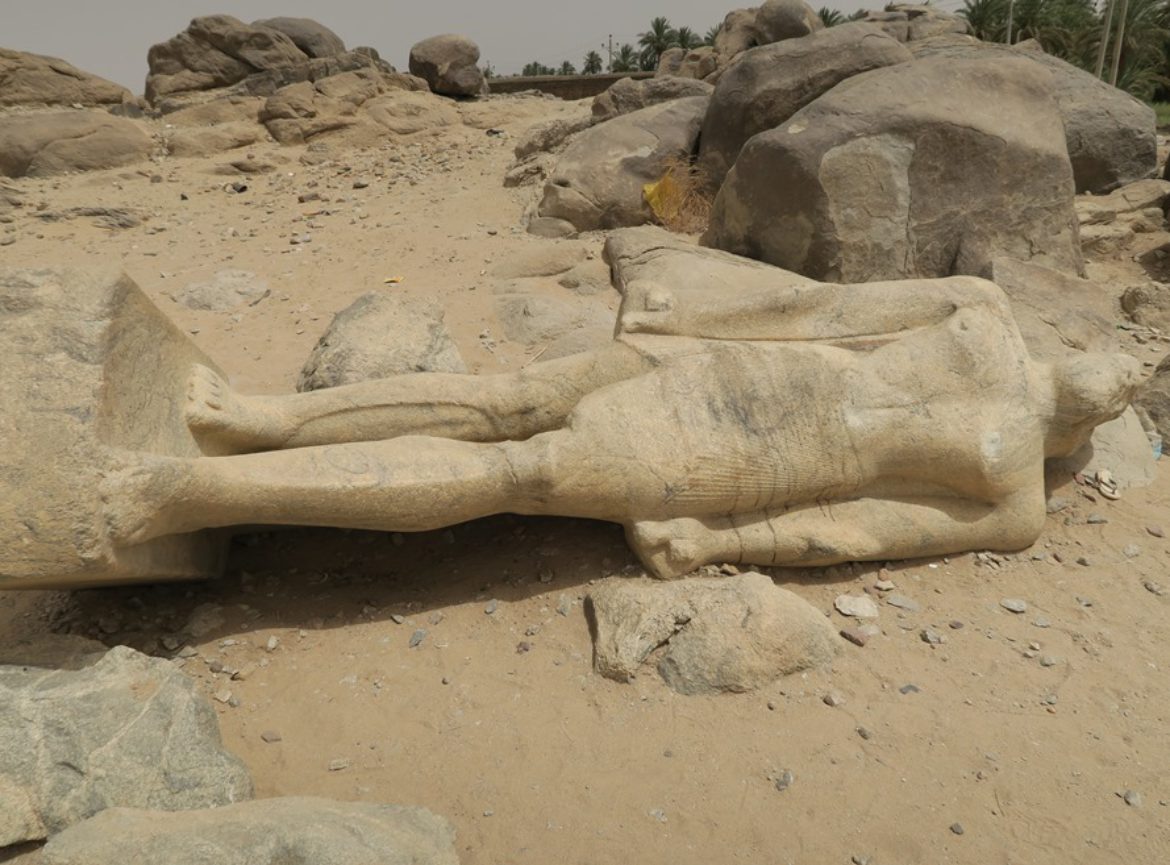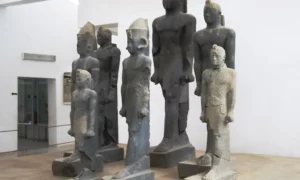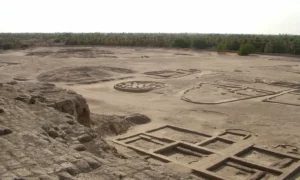Kerma, located in present-day Sudan, stands as a testament to the rich cultural and historical legacy of ancient Nubia. This site, one of the largest archaeological sites in ancient Nubia, has been the focus of extensive excavations and research for decades, revealing a complex society that thrived over 5,500 years ago.
Kerma culture

The Kerma culture was an early civilization that developed in Nubia, near the Nile River in what is now Sudan, around 2500 BCE to 1500 BCE. Renowned for its wealth and power, the Kerma culture had a significant influence in the region due to its strategic location which enabled trade with neighboring areas, including ancient Egypt. The Kingdom of Kerma, as it was sometimes called, was distinguished by its social structure, urban centers, and notable mudbrick architecture. Among its most prominent archaeological features were vast burial mounds known as ‘deffufas’, which served as both religious sites and the resting places of nobility.
Kerma culture burial practices are particularly illustrative of the society’s beliefs and customs. Tombs were richly endowed with goods such as pottery, jewelry, and sacrificial items, indicating a belief in an afterlife where such items would be needed. Elaborate graves suggest that the society had a complex hierarchy with a ruling elite at its apex. Over time, contact with Egypt became increasingly contentious, leading to the conquest of Kerma by the New Kingdom of Egypt. However, the Kerma culture’s influence persisted in the region, laying the groundwork for subsequent Nubian civilizations, such as the Kingdom of Kush, and continues to captivate scholars due to its significant contributions to the heritage of northeastern Africa.
The Kingdom of Kerma’s strategic location along the Nile River was not only pivotal for its development but also for its role as a cultural and trade bridge between sub-Saharan Africa and ancient Egypt. This advantageous position facilitated the exchange of gold, ivory, incense, ebony, and exotic animals, enriching the kingdom and enhancing its status among contemporary civilizations. The interaction between Kerma and Egypt was complex, characterized by periods of trade, cultural exchange, and conflict. This relationship significantly influenced the political and cultural landscapes of both regions, with Kerma adopting and adapting several aspects of Egyptian civilization, including religious practices and artistic styles, while also maintaining its distinct identity.
The social structure of the Kerma culture was sophisticated, with a clear stratification that was reflected in its burial customs and urban planning. The central urban centers, such as the capital city of Kerma itself, were meticulously planned and featured large public buildings, workshops, and residential areas. The presence of monumental structures, such as the deffufas, underscores the importance of religious and ceremonial practices in Kerma society. These mudbrick constructions, unique to Nubia, highlight the architectural ingenuity of the Kerma people and their ability to create enduring symbols of their cultural and religious beliefs.

The decline of the Kerma culture following its conquest by the New Kingdom of Egypt did not signify the end of its influence. Instead, it marked the beginning of a new chapter in the history of Nubia, with the emergence of the Kingdom of Kush. The Kushites, drawing on their Kerma heritage, went on to establish a powerful empire that would, in turn, exert its influence over Egypt during the 25th Dynasty, known as the Nubian Dynasty. This period of Kushite rule over Egypt is a testament to the enduring legacy of the Kerma culture, showcasing the resilience and adaptability of Nubian civilization.
Today, the archaeological remains of the Kerma culture serve as a testament to its historical significance and the sophisticated nature of its society. Excavations have unearthed a wealth of artifacts that provide insight into the daily lives, religious practices, and social organization of this ancient civilization. The study of Kerma is crucial for understanding the early history of northeastern Africa and its role in the broader narrative of human civilization. As researchers continue to uncover the secrets of Kerma, they not only bring to light the achievements of this remarkable culture but also highlight the interconnectedness of ancient societies along the Nile River.
FAQs on the Kingdom of Kerma and Its Culture
Is Kush and Kerma the same thing?
No, Kush and Kerma are not the same, although they are closely related. Kush is a region located in what is now Sudan, and it was home to several powerful kingdoms throughout ancient history. Kerma, on the other hand, refers to both a specific city and the cultural period associated with the Kingdom of Kerma, which thrived from around 2500 BC to 1500 BC. The Kingdom of Kerma is considered one of the earliest and most powerful Nubian kingdoms in the region of Kush.
What was the religion in Kerma?
The religion in Kerma was polytheistic, meaning the people worshipped multiple gods and goddesses, similar to the religious practices in ancient Egypt. However, the specific deities and religious practices of the Kerma culture are not as well-documented as those of ancient Egypt. Archaeological evidence, including tombs and temples, suggests that the people of Kerma had a strong belief in the afterlife and practiced rituals similar to those of their Egyptian neighbors, possibly with a focus on local deities.
What happened to the Kingdom of Kerma?
The Kingdom of Kerma declined around 1500 BC, primarily due to the expansion of the New Kingdom of Egypt into Nubia. The Egyptians, under the leadership of Pharaoh Thutmose I and his successors, launched military campaigns that eventually led to the conquest of Kerma. The region was then incorporated into the Egyptian Empire as a province. The fall of Kerma marked the end of its independent rule, but the cultural and political legacy of the Kerma civilization continued to influence subsequent Nubian kingdoms, such as the Kingdom of Kush.
Where was the Kerma Culture located?
The Kerma culture was located in what is now northern Sudan, near the third cataract of the Nile River. This strategic location allowed the Kingdom of Kerma to control trade routes between central Africa and Egypt, facilitating the exchange of goods such as gold, ivory, incense, and ebony. The heartland of the Kerma culture was centered around the city of Kerma itself, which served as the capital of the kingdom and one of the most important urban centers in ancient Nubia.

Doukki Gel
Doukki Gel is an archaeological site located in Nubia, near the modern city of Kerma in Sudan. It is a significant site that dates back to the Kerma culture, which thrived around 2500 to 1500 BC. The site has revealed extensive information about the ancient Nubian civilization, including monumental structures, tombs, and living quarters. Doukki Gel has been instrumental in understanding the political and cultural dynamics of ancient Nubia and its interactions with neighboring Egypt.

Western Deffufa Kerma
Western Deffufa stands as a testament to the ancient Nubian city of Kerma, holding secrets from a civilization that thrived from 2500 BCE to 1500 BCE. This towering mud-brick structure, one of the oldest and largest of its kind, signifies the former glory of a powerful yet enigmatic kingdom. Archaeologists believe it served a religious purpose, possibly as a temple or a tomb. Its unique architectural style provides invaluable insight into the ancient customs and construction techniques of Nubia, highlighting the advanced skills of the Kerma culture.

